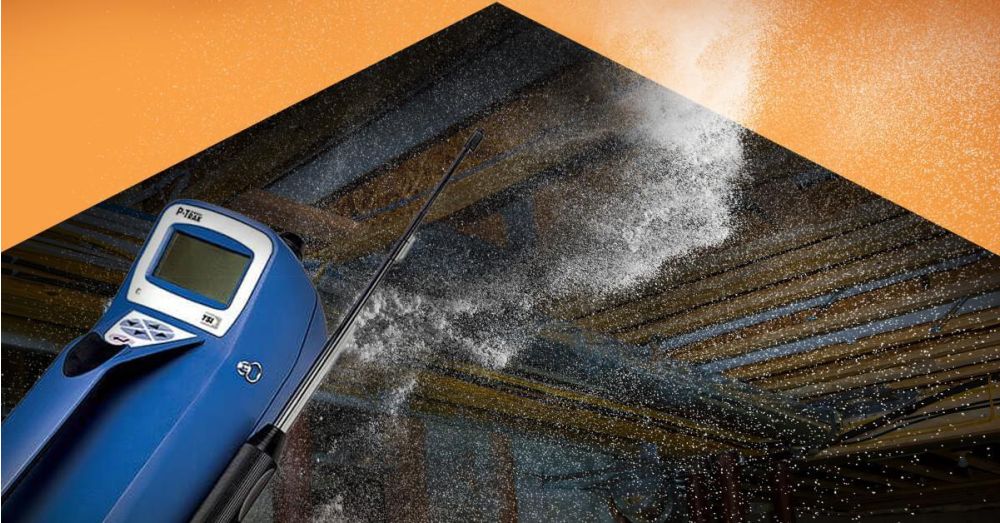Know the Numbers: Particulate Matter and Air Quality Standards
Know the Numbers: Particulate Matter and Air Quality Standards
What are PM standards?
National air-quality standards for PM were first established in 1971 and were not significantly revised until 1987 when EPA changed the indicator to focus on "inhalable particles," which are particles equal to or smaller than 10 microns (PM10). For more info, check out the EPA article, "What are the Air Quality Standards for PM?"
EPA & NAAQS Particulate Matter Standards
The Environmental Protection Agency (EPA) sets the primary (health-based) and secondary (welfare-based) National Ambient Air Quality Standards (NAAQS) for particulate matter. Currently, the EPA has primary and secondary standards for PM2.5 (annual average standards with levels of 12.0 µg/m3 and 15.0 µg/m3, respectively; 24-hour standards with 98th percentile forms and levels of 35 µg/m3) and PM10 (24-hour standards with one-expected exceedance forms and levels of 150 µg/m3).
Why was NAAQS established?
The Clean Air Act (CAA) requires the EPA to set National Ambient Air Quality Standards (NAAQS) for particulate matter, as one of the six criteria pollutants considered harmful to public health and the environment.
What are the 6 NAAQS pollutants?
The six NAAQS pollutants are Ground-Level Ozone, Particulate Matter, Carbon Monoxide, Lead, Sulfur Dioxide and Nitrogen Dioxide.
What two types of air quality standards does NAAQS address?
NAAQS sets two national air quality standards. Primary air quality standards are designed to protect public health with an adequate margin of safety. Secondary air quality standards are designed to protect the public welfare from adverse effects on soil, water, crops, vegetation, man-made materials, wildlife, weather, visibility, and climate; damage to property; transportation hazards; economic values; and personal comfort and well-being.
PM 2.5 Standard
There are two federal primary standards for PM2.5 (fine particulate matter): An annual average standard of 12.0 ug/m3 and a 24-hour average standard of 35 ug/m3. There are two federal secondary standards: An annual standard of 15 ug/m3 and a 24-hour standard of 35 ug/m3 (the same as the primary). Detailed information regarding the federal particulate matter (PM) standards can be found on the U.S. EPA website.
PM 10 Standard
24-hour PM10 standard of 150 μg/m3. However, the annual PM10 standard was revoked because of a lack of evidence establishing a link between long-term exposure to coarse particles and health problems.
How often are NAAQS reviewed?
The Clean Air Act requires the U.S. Environmental Protection Agency to review standards for national ambient air quality every five years.
How does the EPA enforce NAAQS?
When the EPA establishes a new National Ambient Air Quality Standard (NAAQS) or revises an existing standard for a criteria air pollutant, it sets in motion a series of actions aimed at ensuring that air quality throughout the country meets those standards.
The EPA must designate areas as meeting (attainment) or not meeting (nonattainment) the standard. The Clean Air Act requires states to develop a general plan to attain and maintain the standards in all areas of the country and create a specific plan to attain the standards for each area designated nonattainment. These plans, known as State Implementation Plans (SIPs), are developed by state and local air quality management agencies and submitted to the EPA for approval.
Ensure EPA & NAAQS Particulate Matter Standards Are Met with RAECO’s PM Monitoring Equipment
RAECO Rents supplies instrument from leading manufacturers to monitor and alert on dust levels that are present on construction and demolition sites. At RAECO, we have training materials on the site to get you up to speed, and our support staff is available for any question you might have. RAECO Rents only charges you for the days that you have the equipment in your hands, not when it is in transit to or from the testing site.


